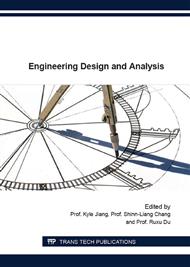[1]
L. De Fusco, H. Jeanmart, J. Blondeau, A modelling approach for the assessment of an air-dryer economic feasibility for small-scale biomass steam boilers, J. Fuel Processing Technology, 134 (2015) 251-258.
DOI: 10.1016/j.fuproc.2015.01.043
Google Scholar
[2]
T. Hlabse, Air-dry coatings for automotive brake system requirements, J. Metal Finishing, 99 (2001) 16-18.
DOI: 10.1016/s0026-0576(01)80805-9
Google Scholar
[3]
M. Abdulkadir, V. Hernandez-Perez, S. Lo, I. S. Lowndes, B. J. Azzopardi, Comparison of experimental and Computational Fluid Dynamics (CFD) studies of slug flow in a vertical riser, J. Experimental Thermal and Fluid Science, 68 (2015) 468-483.
DOI: 10.1016/j.expthermflusci.2015.06.004
Google Scholar
[4]
Wang. F. J., Computational fluid dynamics analysis: Principle and application of CFD, second ed., Tsinghua, Beijing, (2012).
Google Scholar
[5]
E. Eftekharian, O. Abouali, G. Ahmadi, An improved correlation for pressure drop in a tunnel under traffic jam using CFD, J. Journal of Wind Engineering and Industrial Aerodynamics, 143 (2015) 34-41.
DOI: 10.1016/j.jweia.2015.04.013
Google Scholar
[6]
E. Karaismail, I. Celik, Numerical and modeling issues in application of CFD to flow in a simplified plenum relevant to a prismatic VHTR, J. Nuclear Engineering and Design, 240 (2010) 2011-(2022).
DOI: 10.1016/j.nucengdes.2010.02.025
Google Scholar
[7]
M. Abdulkadir, V. Hernandez-Perez, S. Lo, I. S. Lowndes, B. J. Azzopardi. Comparison of experimental and Computational Fluid Dynamics (CFD) studies of slug flow in a vertical riser, J. Experimental Thermal and Fluid Science, 68 (2015) 468-483.
DOI: 10.1016/j.expthermflusci.2015.06.004
Google Scholar
[8]
R. Panneer Selvam. Computation of flow around Texas Tech building using k-ϵ and Kato-Launder k-ϵ turbulence model, J. Engineering Structures, 18 (1996) 856-860.
DOI: 10.1016/0141-0296(95)00156-5
Google Scholar
[9]
T. Zhang, H. Zhou, S. Wang. An adjustment to the standard temperature wall function for CFD modeling of indoor convective heat transfer, J. Building and Environment, 68 (2013) 159-169.
DOI: 10.1016/j.buildenv.2013.06.009
Google Scholar
[10]
X. Hua, Y. Zhang, D. W. Herrin. The effect of conical adapters and choice of reference microphone when using the two-load method for measuring muffler transmission loss, J. Applied Acoustics, 93 (2015) 75-87.
DOI: 10.1016/j.apacoust.2015.01.014
Google Scholar


